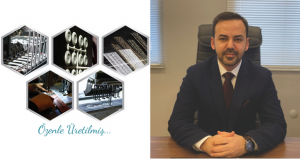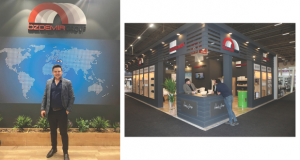As the most widely used mattresses, innerspring mattresses have been serving humanity for thousands of years. These wonders have gone through dramatic changes since their first formats and today’s modern and comfortable kinds.
We are fairly sure that the concept of the mattress is originated from the prehistoric times. By lying on piles of leaves, straw, animal skins and similar soft materials, early humans were able to sleep more comfortably and more soundly than they could have on hard surfaces. In line with development of living conditions, methods and technologies, mattresses went through a diverse range of changes and developments. A boxspring or Divan is a type of bed base typically consisting of a sturdy wooden frame covered in cloth, and containing springs. Usually the boxspring is placed on top of a wooden or metal bedframe which sits on the floor and acts as a brace. The boxspring is usually the same size as the much softer mattress which is placed above the box-spring. Working together, the frame, boxspring, and mattress make up a bed. It is common to find a boxspring and mattress being used together without the support of a frame underneath, the box spring being mounted directly on casters standing on the floor. A box spring mattress set consists of two components: a box spring mattress and an innerspring mattress. The box spring is often described as the shock absorber of this type of mattress set, as it is designed to bear the brunt of body weight, as well as distribute it evenly. The heart of the innerspring mattress is its system of spring wire coils. During the manufacturing process, coils are tempered with heat or electricity to make sure they quickly return back to their original height after weight is applied and released. Mattresses with stabilizing interior springs, probably the single most significant advance in mattress design, were first developed during the mid-1800s. By placing a set of uniform springs inside layers of upholstery, mattress manufacturers could make their product with a firm, resilient, and uniform texture. However, because innerspring mattresses were expensive to manufacture, only luxury ships and hotels could manage the cost. It was not until after World War I that innerspring mattresses were mass-produced by Zalmon Simmons, Jr., the president of a company that had theretofore produced bedsteads. His products proved so comfortable that they became widespread throughout America. Innerspring beds have been the most popular mattress type for many decades due to various factors. People are familiar with them, they are widely available and they come in a variety of price, firmness and comfort levels. In addition, several models provide good motion isolation making them couple friendly. The beds may also be more suitable in certain ways for romantic activity than other mattress types.The basic of a mattress is formed by making an innerspring unit. It is a series of wire coils, attached to each other with additional wire. The mattress manufacturers mostly use four types of coils:
1- Bonnell
2- Offset
3- Continuous
4- Pocket System.
The hourglass-shaped Bonnell springs are knotted at both ends. Offset spring is also in the shape of an hourglass but its top and bottom are flattened so as to facilitate a hinging action among the coils. Continuous innerspring is one very long strand of steel wire configured into S-shaped units. Pocket coil is encased in a fabric which also connects it to the adjoining coil-casing units. A mattress can have between 250 and 1,000 coil springs. In the mattresses that have fewer coils, a heavier gauge of wire has to be used. The individual coils can be attached in a variety of ways. The most general method is that of using helicals- the corkscrew-shaped wires which run along the top and bottom of the springs, lacing the coils together. Rigid border wires are also attached sometimes around the perimeters for stabilizing the innerspring unit. Today’s sophisticated mattresses improve sleeping comfort in several ways. First, through a variety of enhanced innerspring designs, modern mattresses distribute the weight of the body over a broad area; this also helps to prevent differential wear on the mattress. In addition, mattresses offer surfaces of appropriate softness and flexibility to help keep the spine in its naturally curved position. However, contemporary mattress manufacturers carefully avoid excessively soft surfaces that would distort the position of the sleeper’s spine, resulting in discomfort or even pain. Presently, the consumer demand for mattresses is fairly consistent. In 1990, approximately 16 million mattresses were sold in the United States. Together with foundations, mattresses accounted for about $4 billion in retail sales. With the exception of a few large companies, most mattress manufacturers are fairly small, community-based operations.Of the approximately 825 mattress factories across the United States, most are still owned and operated by the founding families. Mattresses are presently made of many materials, both natural and synthetic. The innerspring, helical, and boxspring components are made from wire; the boxspring wire is usually of a heavier gauge than that used in the innerspring. The insulator consists of semi-rigid netting or wire mesh, and the cushioning layers can comprise a number of different materials including natural fiber, polyurethane foam, and polyester. The flanges are made of fabric, and the hogs rings of metal. Top, bottom, and side panels consist of a durable fabric cover quilted over a backing of foam or fiber, and binding tape that holds the ticking together is made of heavy-duty, fibrous, synthetic material. The underlying boxspring may consist of either a wooden frame with slats or of metal coils similar to those used in the mattress itself. The boxspring may be upholstered, but, even if it is not, it always receives a fabric covering. Once the completed innerspring unit is received, workers manually apply the insulator. Next, they apply the cushioning layers that will determine the feel and comfort of the final product. Meanwhile, the decorative cover that will serve as the exterior for the top, bottom, and sides is made on a giant quilting machine, which controls a multitude of needles that stitch the cover to a layer of backing material. Once the cover is quilted, it is cut into top, bottom, and side panels. Next, flanges are added, and hogs rings are stapled to them. Finally, in the closing operation, workers use a movable sewing head mounted on a track to feed the top, bottom, and side panels and a heavy duty binding tape into the sewing machine as it moves around the mattress. The mattress is then ready for packaging. it consists of a wooden frame that may or may not have a layer of upholstery attached to its top. Regardless of the internal composition, the frame is usually inserted into a pre-sewn cover that encases the top and sides of the unit. A border fabric that matches the mattress exterior is applied to the sides, and a dust cover is added to the face.
 SleepTech Magazine Mattress, Accessories, Machinery, Raw Materials
SleepTech Magazine Mattress, Accessories, Machinery, Raw Materials


